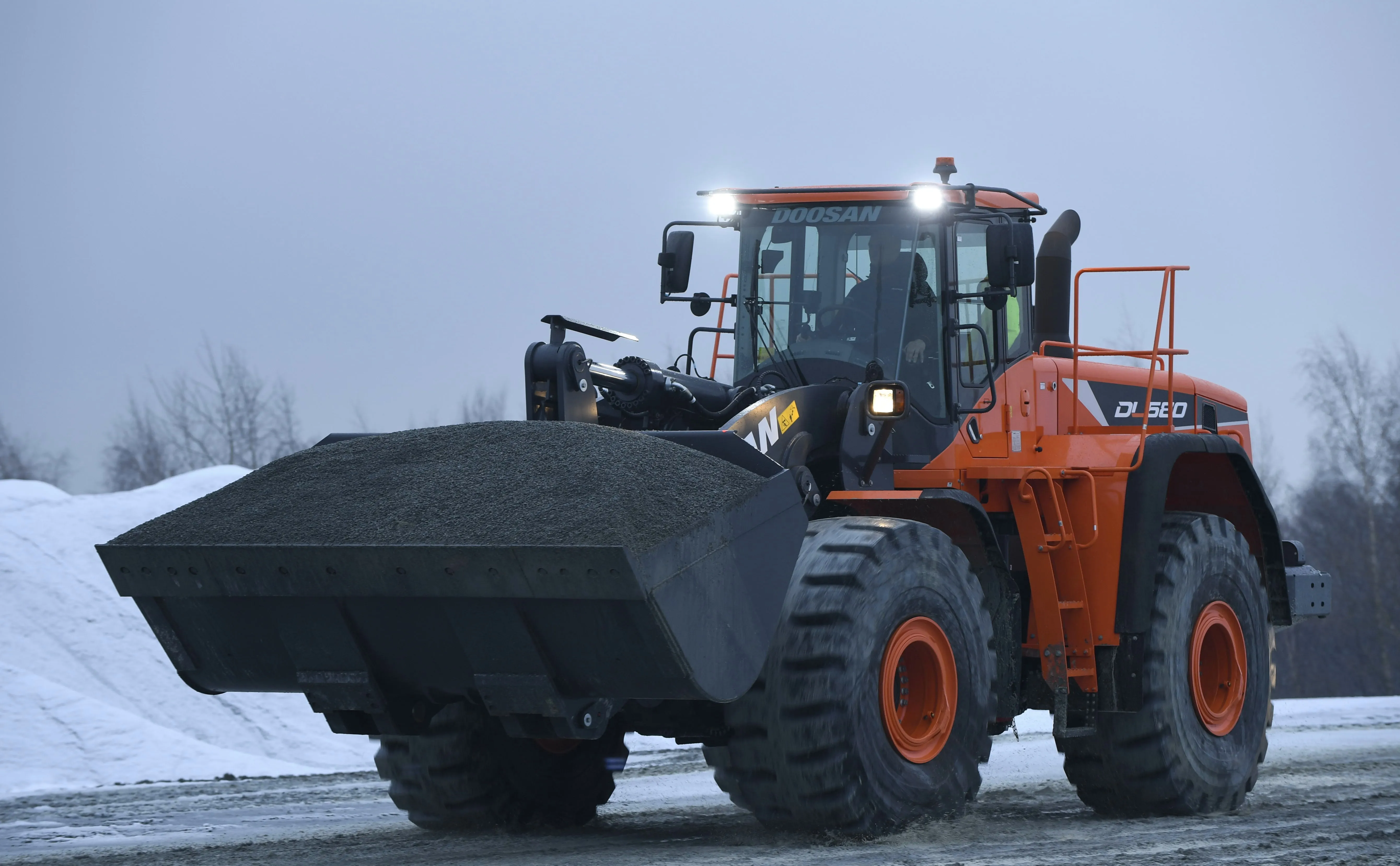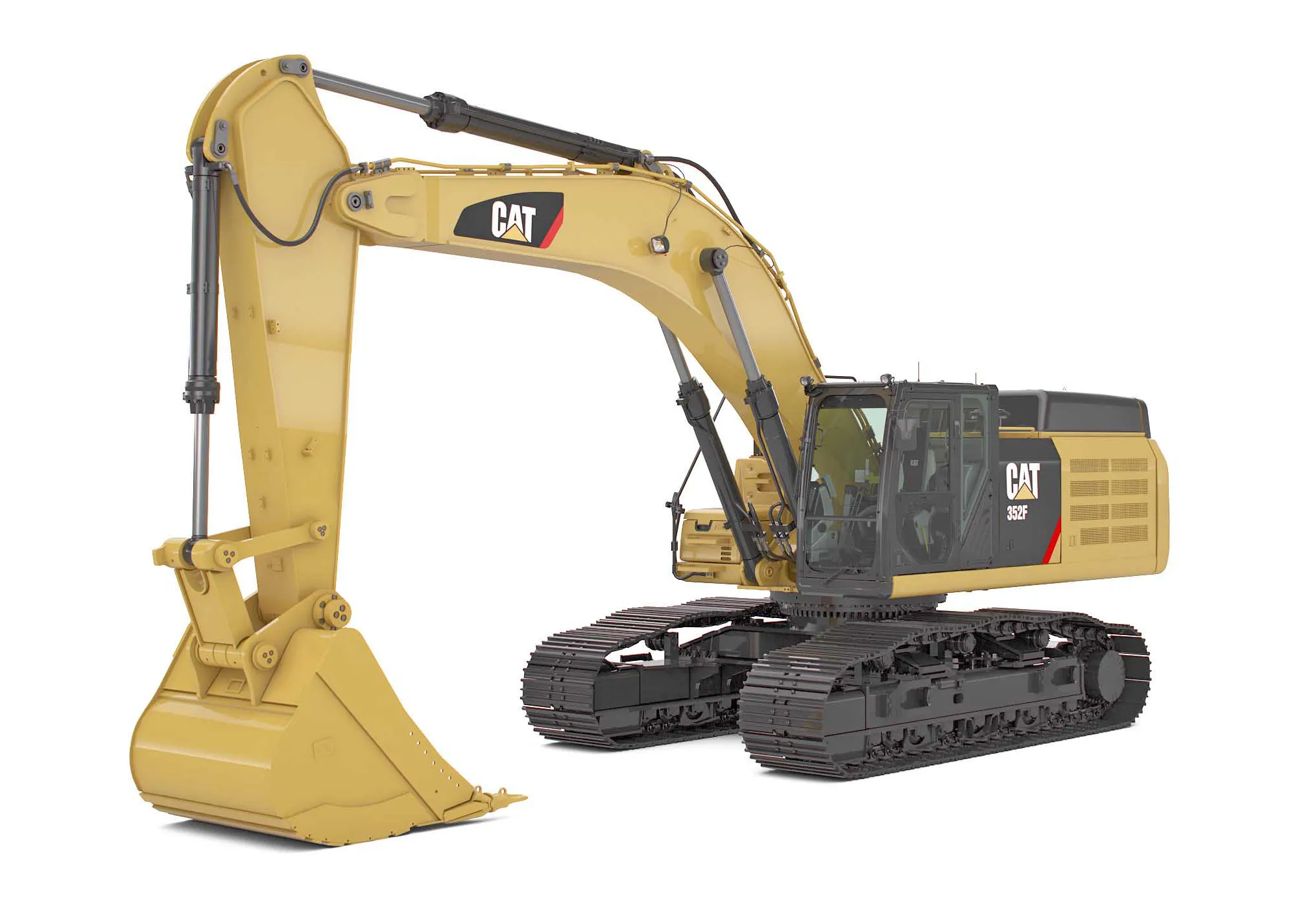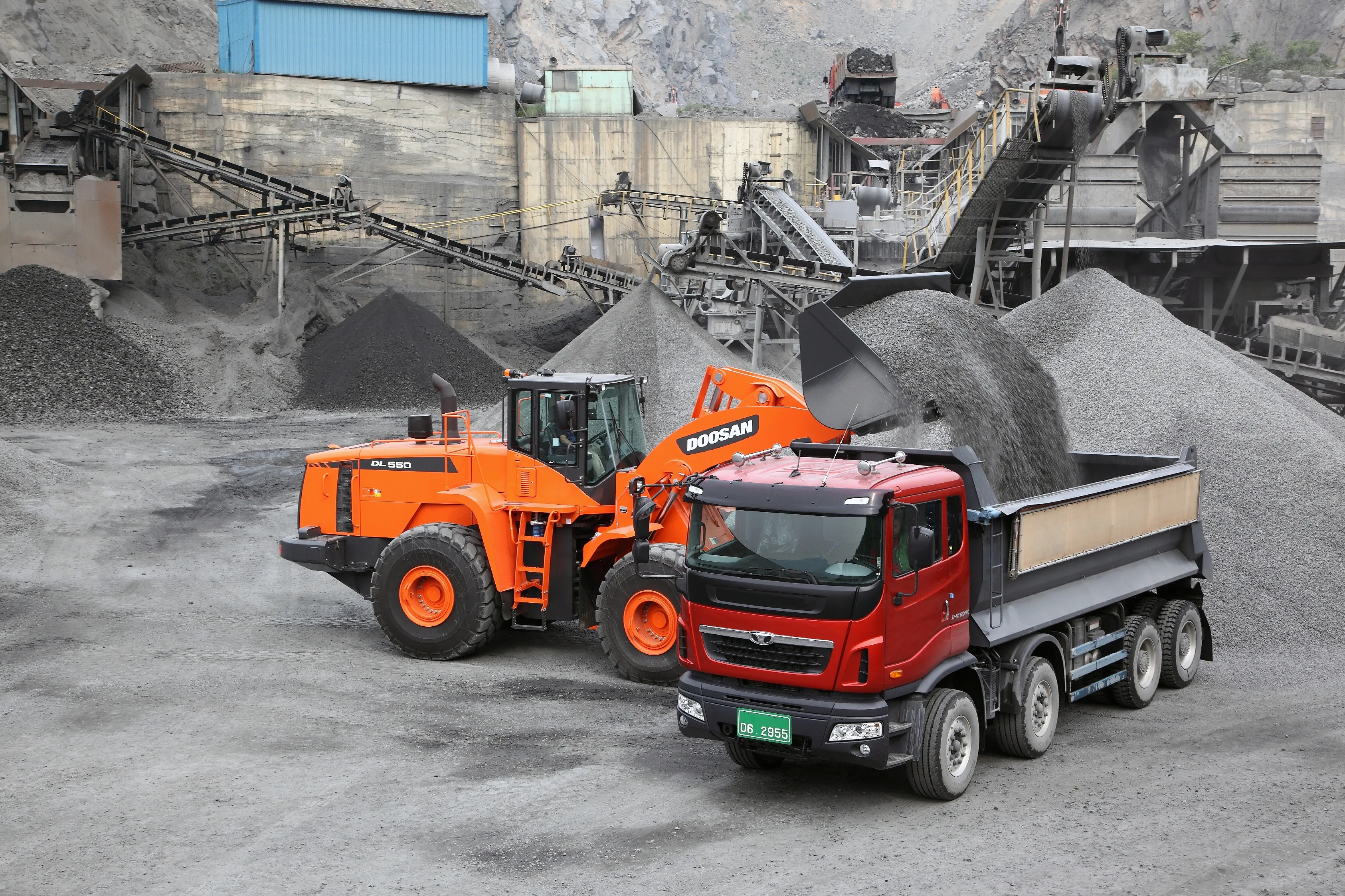
The most important development is an upgrade of the suspension to a hydro-gas self-levelling system for better shock absorption, especially when the truck is empty.
To complement this, the operator now benefits from a Grammer Actimo XXL seat with its own independent low-frequency pneumatic and wide scissors-type suspension. The new dashboard layout incorporates soft-touch material composition that is easier to clean. An LED lamp indicates when it is safe to switch off the power cut-off.
Other features include a new easy-to-use lever for retarder steering and a new, more precise brake system for increased sensitivity and performance. Now fitted as standard are a USB charger and a 12V/24V power socket, together with more convenient compartment storage and electrically adjustable mirrors.
On the outside of the cab, a new all-round handrail has been installed for safer cleaning and other tasks.
According to Doosan, there will be lower running costs because there are fewer service points. There are also fewer oil types in the driveline along with increased intervals for transmission oil change. In addition, the new cab tilting system enables the service technician to lift and close the cab in just a few minutes.
Doosan says that the DA30’s forward turning point along with its tandem bogie and the sloping rear frame results in best-in-class rough and soft terrain capabilities and avoids the need for electronic aids such as traction control.
The Doosan DA30 is powered by the
Bell now 4x4
ADT specialist
While not possessing the extreme off-road capabilities of a 6x6, the B30E 4x4 still offers sound all-weather characteristics on undulating haulage roads and light terrain. It also provides better manoeuvrability in confined material handling areas or stock yards. Having one less axle means no tyre scuffing which results in significantly reduced tyre wear compared to 6x6 applications on hard ground.
The front tyres of the 21.5tonne B30E 4x4 are typical 23.5R25 whereas the heavier loaded rear axle uses 29.5R25 tyres, most commonly found on 40tonne ADTs. With its oscillation joint providing permanent contact of all wheels and a well-balanced load distribution - empty: 50/50; laden: 33/66 – Bell says that the B30E 4x4 proves itself far superior to rigid tippers or tractor-trailers at load and dump areas or in wet conditions.
The new two-axle truck is based on the 6x6 model Bell B30E and shares the front chassis and oscillation/articulation joint. This means that Bell Equipment customers benefit from the 246kW Mercedes-Benz engine, six-gear Allison automatic transmission with integrated automatic retarder and a comprehensive package of productivity, safety and ease of operation features.
These features are based on real-time data collection by the truck’s sensors for onboard weighing, pitch/roll sensor and so on. Data collection is controlled by embedded software in the truck controller. The wet brake system is the same as the B30E on the front axle while the rear axle has the larger set of brakes from Bell’s 6x6 B40E.
With an identical payload to the B30E 6x6 of 28tonnes, the major differences are the shorter rear chassis with a solidly mounted Bell 36tonne axle and the newly designed 18.6m³ bin. Compared to the three-axle ADT, the B30E 4x4's outer turning circle diameter is 1.3m smaller at 14.6m. This makes manoeuvring in narrow loading or tipping spaces easier and faster.
Load sensing
In the wheeled loader range, Doosan offers its DL580-5 with a load-sensing hydraulic system. For this, the variable axial piston pump generates the flow upon demand in the amount necessary to perform the work. This also gives better traction for penetrating into the stockpile, as less force is necessary to operate the bucket in many situations.
Doosan says that the load-sensing hydraulics also minimise loss in the hydraulic circuit during a carrying operation in which the loader is usually running - an essential technology for wheeled loaders. In response to customer feedback, Doosan said that when limited force is available, the load-sensing system gives higher power-use priority to bucket operation than boom movement.
Joystick control on the new wheeled loader is designed to easily combine several movements at the same time. As an option, three-lever fingertip control can be provided for smooth and near-effortless control. Both of these controls use electrohydraulic piloting.
As standard, the DL580-5 has a boom kick-out function for working in confined spaces or when repeating similar operations in specific work ranges. This could be for when a certain dump-height must be reached every day. The same system is used to set the bucket automatically to the return-to-dig position.
The DL580-5 is factory-installed with the latest DoosanConnect for web-based fleet and asset management. This is now standard in all new DL-5 generation machines and provides comprehensive machine performance data in a dual mode – satellite and mobile network.
The system can support multiple Doosan machines in several locations. It can monitor machine utilisation rates to assess if the right mix of machines are operating together. It can also guide drivers to help them to operate equipment with higher efficiency and to locate replacement machines in the event of maintenance work or breakdowns, all under the umbrella of anti-theft and theft recovery protection systems.
Heavy from Hyundai
Meanwhile, also in the wheeled loader category,
An optional dual axle-oil cooler prevents overheating on both axles when performing repetitive work in a narrow operating area.
Options on the HL960 HD include extra guarding to protect man and machine from falling debris and material. The guarding also protects against materials making their way into the machine’s major components. Guarding options are available for the cabin, bucket cylinder, head lamp, attachment hoses, rear combination lamp and rear grill.
All Hyundai HL900 series models include Hyundai-branded onboard weighing system as standard. Accurate to +/- 1%, the system has automatic and manual settings for monitoring individual and cumulative bucket load weights. System measurements are displayed on the multifunction screen in the cab, providing load-weight monitoring reliable enough to support production management.
The machine’s environmental credentials start with an automatic shutdown when it enters into an idling state to prevent unnecessary fuel consumption and emissions. Operators can select operating mode and idling time depending on work environments which improves its efficiency even further. The standard five-speed transmission with lock-up clutch also aids fuel consumption, depending on the working conditions.
As well, the ECO Gauge feature enables consistent economic operation through frequent checks of the machine’s operating state. It also monitors fuel consumption including average rate and total amount of fuel consumed.
When operators use the accelerator pedal, the ECO pedal - which comes as standard - can distinguish between economical operation and power operation and recognises the economical operation which in turn reduces the fuel consumption.
The HL Series also feature a travel-speed limit-control where the operator can limit the maximum travelling speed within a range of 20-40kph to suit jobsite conditions and regulations.
By selecting the H-mode, the ICCO - Intelligent Clutch Cut-off - will engage to minimise the loss of power on the torque converter. The ICCO restrains generation of heat that improves overall fuel efficiency. The Hydraulic Lock Differential has the advantages of both improving productivity and reducing fuel consumption by preventing tyre slip during the operation.
The HL900 is also available in long-boom XT version for larger dumping height.
A greener Komatsu
Updates inside the cab include an air suspension operator seat designed to dampen vibrations and give a more comfortable ride. The Komatsu cab ensures an internal noise level of 71dB(A) and benefits from increased internal air pressure to prevent dust and other particulates entering the enclosed unit.
Meanwhile, an ECO Guidance system provides the operator with information to help save on fuel.
Italian job
Meanwhile, for those smaller jobs,
Since 2008, sales of the Siena region facility of Kato Imer - formerly Ihimer - went from 30% of total turnover to 80%. Today, as many as seven models are produced in Italy, including the 9VXE micro excavator back in 2013, followed by model 27V4 in 2014. This production complements the production of mini dumpers with operating loads from 400-2,500kg and of skid loaders.
Kato Imer also recently changed livery and the historical green has been replaced by the yellow hue of the Japanese parent.
The V4 mini-excavator series stands out from the competition because of the three hydraulic pumps in place of load sensing. This increases speed of movement without foregoing controllability, the company says.
An essential feature of the V4 series is interchangeability and consistency of spare parts, thanks to standardisation of the components and layout. Bucket tooth breakout force for both models is just over 29kN. For each model, the engine is a 17.5kW
The 35V4 has a carrier that may be widened by 1550-1800mm, which significantly increases stability in side digging, according to the company.







